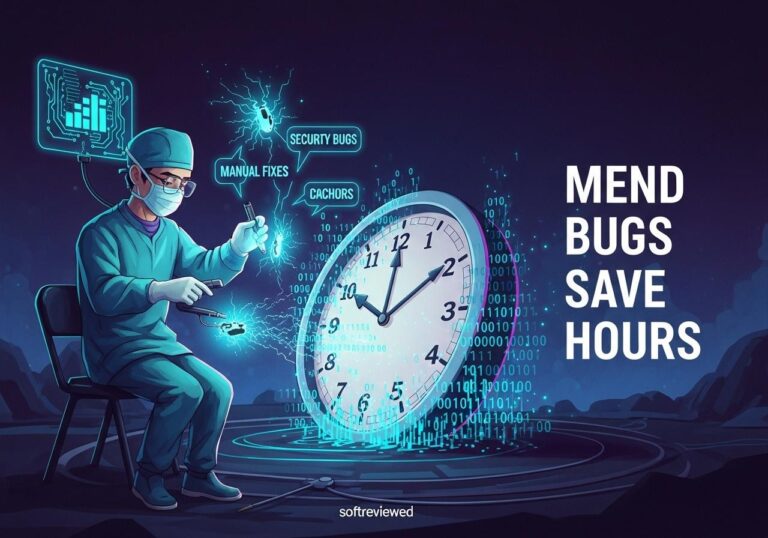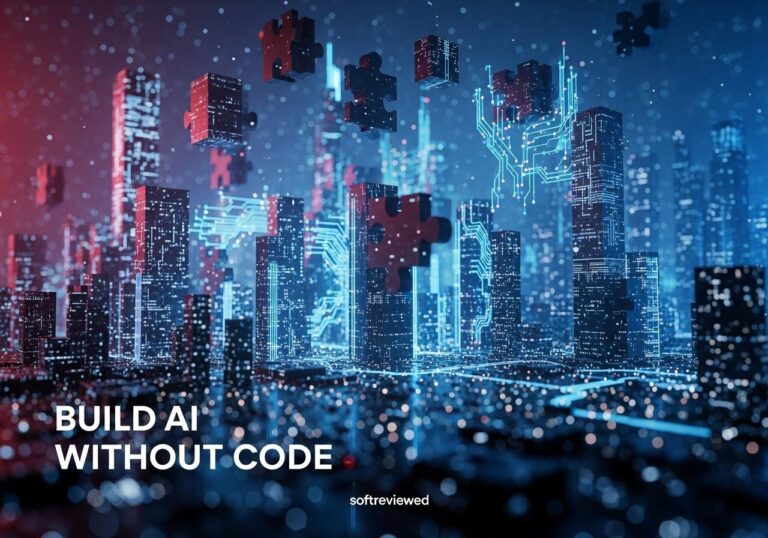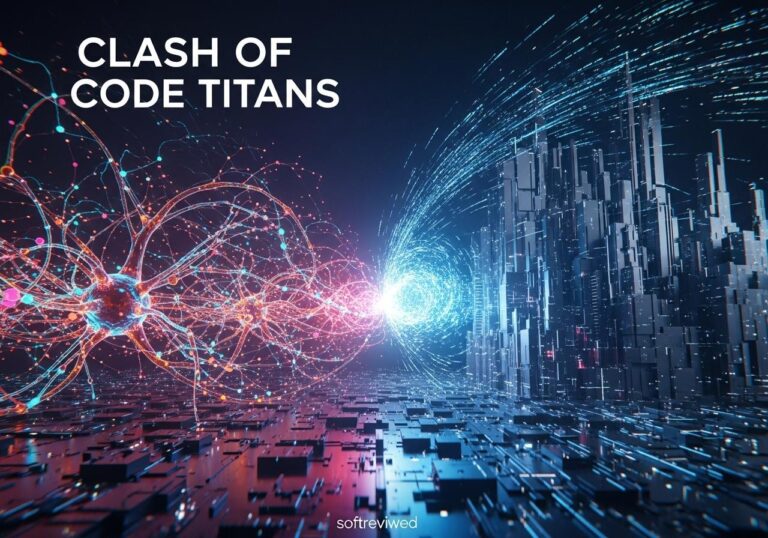DeepSeek R1 vs OpenAI o1 Preview: Key Takeaways
A comparative analysis of two leading AI models
📊 Math Benchmark Performance
DeepSeek R1 demonstrates superior performance on AIME (52.5% vs 44.6%) and MATH (91.6% vs 85.5%) benchmarks compared to OpenAI o1 Preview.
🔍 Transparent Reasoning
DeepSeek R1 provides clear step-by-step reasoning processes, offering better transparency compared to OpenAI o1 Preview.
🚀 Development Potential
Being open-source, DeepSeek R1 enables community-driven improvements and quick adaptation to emerging challenges.
💻 Coding Capabilities
Both models show equivalent performance in coding tasks, demonstrating strong programming capabilities.
🎯 Usage Features
DeepSeek R1 offers more generous usage limits with 50 free daily messages versus OpenAI o1 Preview’s 30 weekly messages.
⚡ Token Performance
DeepSeek R1 shows notable accuracy improvements with increased reasoning tokens, surpassing o1 Preview in specific scenarios.
Is it possible to get cutting-edge AI without breaking the bank? For many, the hefty price tag of models like OpenAI’s offerings has been a barrier to entry. But what if there was a high-performing alternative that came completely free? Enter DeepSeek R1, a large language model (LLM) that’s been making waves in the AI community. 🌊 It’s being touted as a potential game-changer, challenging the established dominance of models like OpenAI’s GPT Preview models and Anthropic’s Claude, in areas like math, coding, and complex reasoning tasks, all while being open-source and free to use. This article explores if the claims are true, and if DeepSeek R1 can truly stand up to the challenge.
The Rise of DeepSeek: A New Player in the AI Arena
- While OpenAI has become a household name in AI, DeepSeek, a Chinese AI research lab, has quietly been developing its own powerful models.
- Backed by High-Flyer Capital Management, DeepSeek aims to democratize access to AI through open-source initiatives. 🚀
- Their latest offering, the DeepSeek R1 model, is designed to rival established players, offering impressive performance at a fraction of the cost — or, in many cases, for free.
- This has sparked significant interest, particularly among developers and researchers seeking cost-effective yet powerful AI tools.
DeepSeek R1: What Makes It Tick?

- So, what exactly is DeepSeek R1? 🤔
- At its core, it’s a large language model trained to excel in complex reasoning.
- Unlike some other models that rely heavily on supervised fine-tuning, DeepSeek R1 emphasizes reinforcement learning (RL), allowing the model to develop its own reasoning patterns.
- The model is available in a few versions including R1-Zero (trained purely on RL), and R1 (which builds upon R1-Zero with cold-start data).
- The models, including smaller distilled versions, are all open-source. This makes it more accessible for research, development, and practical applications.
Reinforcement Learning and Reasoning: The Core of DeepSeek R1
- DeepSeek R1’s unique approach stems from its training process.
- Initially, DeepSeek R1-Zero was trained purely through large-scale reinforcement learning, without supervised fine-tuning (SFT).
- This allowed the model to naturally develop powerful reasoning behaviors, including self-verification and long chain-of-thought (CoT) capabilities.
- However, this initial version faced issues with readability and language mixing.
- To address these issues and enhance reasoning performance, DeepSeek R1 was developed, which integrates cold-start data before applying RL.
- This two-stage training process allows DeepSeek R1 to discover improved reasoning patterns and align with human preferences.
- The result? A model that can tackle intricate problems with more accuracy and clarity.
DeepSeek R1 vs. OpenAI’s GPT Preview & Claude 3.5 Sonnet: A Detailed Comparison
The buzz around DeepSeek R1 comes from its claimed ability to compete with models like OpenAI’s GPT Preview models (including o1-preview) and Anthropic’s Claude 3.5 Sonnet in key areas. DeepSeek R1 has demonstrated competitive performance across various reasoning benchmarks, including math, code generation, and general logic. Let’s delve into a detailed comparison:
| Feature | DeepSeek R1 | OpenAI GPT Preview Models (e.g., o1-preview) | Claude 3.5 Sonnet |
|---|---|---|---|
| Training Focus | Primarily Reinforcement Learning with cold-start data | Supervised Fine-Tuning with some Reinforcement Learning | Primarily Supervised Fine-Tuning |
| Reasoning Approach | Emphasizes transparent chain-of-thought (CoT) | Chain-of-thought but reasoning process is less transparent | Strong Reasoning, but less transparent than DeepSeek |
| Cost | Free to use; API costs significantly less | Pay-as-you-go, can be expensive for heavy usage | Pay-as-you-go, competitive pricing |
| Access | Open-source; API available | Proprietary API with tiered access and costs | API access via Anthropic, Amazon Bedrock, etc. |
| Transparency | Reasoning steps are visible | Reasoning steps are generally hidden | Reasoning steps are less transparent |
| Context Window | Variable, but can handle long contexts | Typically 128k tokens. | 200k tokens |
| Key Strengths | Math, code generation, transparent reasoning | General-purpose, good for diverse tasks | Graduate-level reasoning, coding proficiency |
| Reasoning Transparency | Displays reasoning steps in CoT | More like “black box,” reasoning process less clear | Reasoning less transparent, but still strong |
| Self-Fact-Checking | Built-in self-verification capabilities | Less emphasis on built-in self-verification | Less emphasis on built-in self-verification |
| Code Generation | Strong performance in coding tasks | Good, general coding capabilities | Excellent code generation performance |
| Math Capabilities | Very strong performance | Strong performance | Competitive Math capabilities |
Performance Benchmarks: Where Does DeepSeek R1 Shine?
- So, how does DeepSeek R1 stack up in terms of actual performance? 🤔
- Here’s a brief look at some key benchmarks:
- AIME 2024 (Pass@1): DeepSeek R1 achieved an impressive score of 79.8%, slightly outperforming OpenAI’s models in some tests.
- MATH-500 (Pass@1): DeepSeek R1 has outperformed some OpenAI models, with a 97.3% accuracy compared to 96.4%.
- SWE-bench Verified: DeepSeek R1 has demonstrated a 49.2% success rate, suggesting a higher capability for handling complex domain-specific tasks, similar to Claude 3.5 Sonnet (49%).
- LiveCodeBench: The distilled model DeepSeek-R1-Distill-Qwen-32B scored 57.2%, a standout performance among smaller models.
- MMLU: Claude 3.5 Sonnet achieved a score of 88.7%, demonstrating strong undergraduate-level knowledge.
- HumanEval: Claude 3.5 Sonnet achieved 92.0% in code generation, showcasing its proficiency in coding tasks.
- These results indicate that DeepSeek R1 is not just a cheap alternative.
- It’s a serious contender in reasoning tasks, often matching or exceeding the performance of more established models in specific areas.
- The models, particularly the distilled versions, are showing competitive performance, even surpassing OpenAI’s models and Claude 3.5 Sonnet in certain benchmarks.
The Cost Factor: Why Free Might Just Be the Best Price
- One of the most compelling aspects of DeepSeek R1 is its price – often, it’s free! 💰
- The base models are open-source, allowing developers, researchers, and businesses to use, modify, and commercialize them without licensing fees.
- This contrasts sharply with OpenAI’s pricing model, which is based on a pay-as-you-go system measured in tokens, and Anthropic’s pricing for Claude 3.5 Sonnet which also uses a pay-as-you-go model.
- This can make these alternatives costly for projects that require extensive API usage.
- DeepSeek also offers API access at a significantly lower cost than most competitors.
- For instance, a recent report showed the DeepSeek R1 API costing $2.19 per million output tokens, compared to OpenAI’s GPT models, which can cost up to $60 per million output tokens, and Claude 3.5 Sonnet at $15 per million output tokens.
Decoding OpenAI’s and Anthropic’s Pricing Structures
- To better understand the cost differences, let’s look at how OpenAI’s and Anthropic’s pricing work.
- OpenAI uses a token-based system, where you are charged for both input and output tokens.
- The price varies depending on the model, with more powerful models incurring higher costs.
- OpenAI’s pricing is a tiered system with both pay-as-you-go options and subscription models, making it potentially more expensive for heavy usage.
- Anthropic charges based on token usage for Claude 3.5 Sonnet, with input tokens at $3 per million and output tokens at $15 per million.
- For detailed information on pricing, you can refer to the OpenAI pricing page 🔗 and the Anthropic pricing page.
Is DeepSeek R1 Really Free?
- Yes, DeepSeek R1 is often free to use! You can access it directly through chat interface or via API.
- Free Access via Chat: You can try DeepSeek R1 for free by using the web interface at chat.deepseek.com.
- API Access: You can integrate DeepSeek R1 into your applications through their API.
- While the core DeepSeek R1 model is open-source and free to use, there are associated costs when accessing it via DeepSeek’s API.
- However, even the API pricing is significantly more affordable than that of OpenAI and Anthropic, making it a cost-effective option for various projects.
- The base model being free means you can host and run the model yourself, removing the cost of the API, if that is what you prefer.
- This level of flexibility is a significant benefit for researchers and smaller organizations looking to experiment with and implement AI solutions.
What DeepSeek R1 Offers: Beyond the Price Tag
- Beyond the attractive price, DeepSeek R1 has several features that set it apart:
- Open Source Availability: Being open source is a crucial advantage for fostering transparency, community-driven development, and collaborative innovation.
- Reasoning Focus: The model’s training emphasizes logical planning and self-fact-checking, leading to enhanced accuracy and reliability in its outputs.
- Distilled Models: Smaller distilled models provide strong performance for resource-constrained applications.
- Chain-of-Thought (CoT) reasoning: The models show their reasoning steps, which not only boosts trust but also offers users better insights into how the AI reaches its conclusions.
The Transparent Reasoning of DeepSeek R1
- One notable feature of DeepSeek R1 is its transparency in the reasoning process.
- Unlike some models that operate as “black boxes,” DeepSeek R1 displays its reasoning steps.
- This transparency allows users to understand how the model arrives at its conclusions. 🤔
- This is particularly important in fields requiring high levels of accountability and trust, like finance and healthcare.
Potential Challenges and Considerations
- Despite its strengths, DeepSeek R1 is not without its challenges.
- Some reports have noted occasional difficulties with logical reasoning, potential censorship issues, and limitations in handling overly complex scenarios.
- These issues suggest that while the model is impressive, it’s still a developing technology.
- Additionally, because DeepSeek-R1-Zero is trained purely with RL, it sometimes produces outputs with poor readability, endless repetition, and language mixing.
- However, these issues are actively being worked on.
What’s Next for DeepSeek R1 and the Future of AI?
- DeepSeek R1’s development is ongoing, with continuous improvements in performance and capabilities.
- The model is still in active development, with its creators promising to make it available via API calls and to release the full model as an open-source offering.
- This suggests that the model’s reasoning capabilities, accessibility, and usability will improve over time.
- As a strong competitor to established players, the project has the potential to shake up the AI industry and increase the accessibility of AI.
The Dawn of Open-Source AI: A New Era
- DeepSeek R1 is more than just a new AI model, it represents the growing trend of open-source AI.
- By making the models freely available, DeepSeek is contributing to the democratization of artificial intelligence.
- This allows a wider audience of researchers and businesses to experiment, innovate, and build applications without financial barriers.
- This marks a shift away from the dominance of large, proprietary AI systems, fostering a more collaborative and inclusive AI ecosystem.
DeepSeek R1: A Paradigm Shift in AI Accessibility
The question of whether DeepSeek R1 will “topple” OpenAI or challenge the established players remains to be seen, but it has definitely created an exciting and significant shift in the AI landscape.
In conclusion, DeepSeek R1 presents itself as a formidable alternative to proprietary models like OpenAI’s GPT Preview models and Anthropic’s Claude 3.5 Sonnet.
It offers competitive performance, significant cost advantages, and increased transparency.
While it’s not without its challenges, its strengths make it a powerful and appealing option for a wide range of applications.
By challenging the status quo and offering advanced capabilities for free (or very low cost), DeepSeek R1 is heralding a new era of accessibility and democratization in AI. ✅
Open Source AI Model Performance Metrics (2023-2024)
Comparative analysis of DeepSeek and other AI models across performance metrics, showing significant advantages in accuracy, speed, and cost efficiency.







